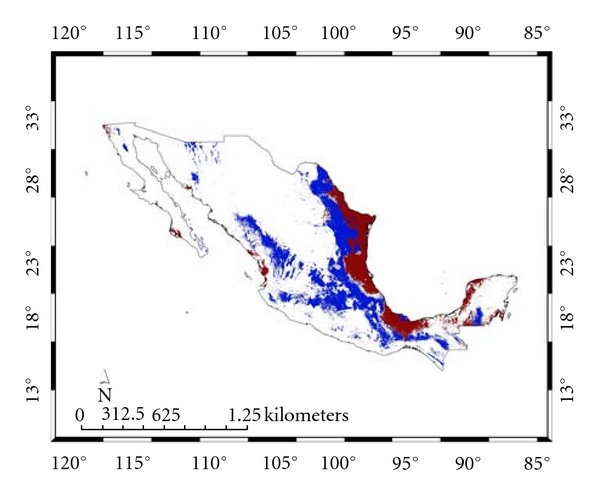Lyme disease, a a tick-borne disease caused by Borrelia burgdorferi, has had an increasing number of cases occur in Mexico. While the disease is rare in the Southern United States, it has been found to occur in Northern and Mid-Western US and Europe. The authors investigate the distribution of potential tick vectors (ten Ixodoes spp. and Amblyomma cajennense [inclusion of this species as a vector is through personal communication]) in Mexico.
Occurrence data of the ticks was collected from prior publications and field surveys. However, the occurrence data for ticks in Texas and Mexico was too sparse to do the models independently. While the data used was collected in both Mexico and Texas, the authors only present the results for Mexico. Environmental data was collected from WorldClim. The distribution model used was MaxEnt and the trained for the Amblyomma cajennense and the ten Ixodoes as a group.

From the results, there is spatial non concordance between the species. Amblyomma cajennense was mainly predicted to occur in mangrove and marsh regions at lower altitudes along the coast (red region). The Ixodoes group are mainly found in oak and pine-oak forests. These results highlight that if a species in the Ixodoes group is capable of transmitting the pathogen then the areas of highest risk are at high-altitude low temperature areas (which helps explain why Lyme disease is so rare in the southern US, high temperatures). However, if it is true that Amblyomma cajennense is capable of maintaining the pathogen in reservoir hosts, then the region extends eastern lowlands of Mexico.
Illoldi-Rangel, P. et al. 2012 Species distribution models and ecological suitability analysis for potential tick vectors of Lyme disease in Mexico. J. Trop. Med. 2012.
